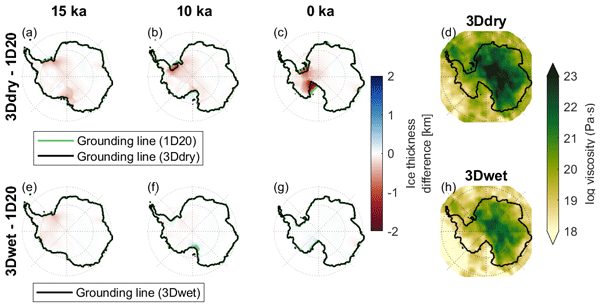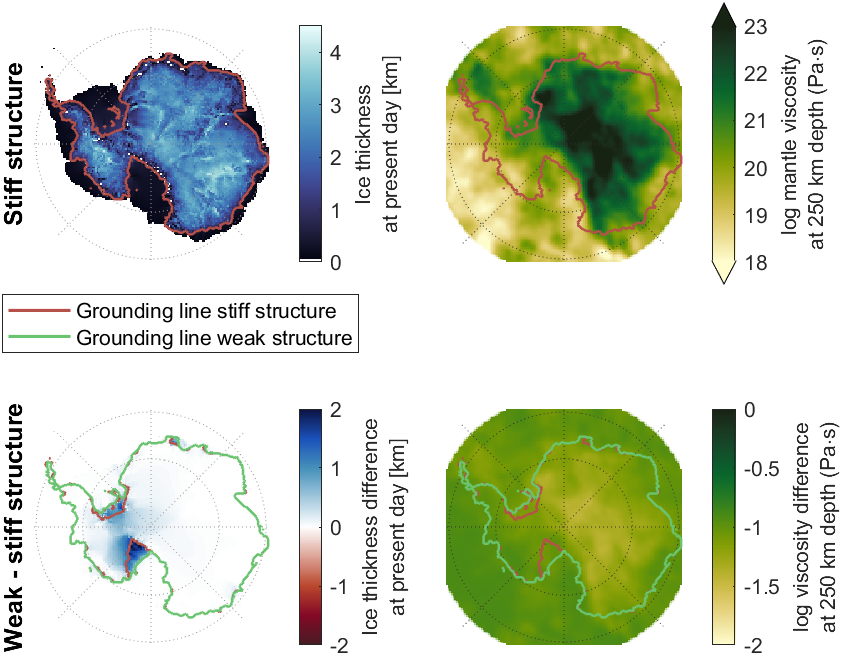
The article “Simulation of a fully coupled 3D glacial isostatic adjustment – ice sheet model for the Antarctic ice sheet over a glacial cycle” was published, read here the main results.
- The growing and melting of the Antarctic ice sheet over the last glacial cycle causes the interior of the Earth to deform. This dampens the ice sheet evolution. This study shows that a weaker 3D Earth structure results in a 2 kilometer thicker ice sheet locally.

- A growing ice sheet leads to increased mass on the Earth’s surface and to subsidence of the surface. A melting ice sheet reduces the mass on the Earth’s surface, which then rises. The feedback of the Earth’s surface stabilizes the grounding line and acts as a negative feedback.

- The atmospheric temperature and sea level decrease during the glaciation phase, but also temporarily increase over certain periods. During the deglaciation phase, the temperature and sea level increase relatively fast between Last Glacial Maximum (20 kyr ago) and 5000 years ago.

- The stiff bedrock elevation is 350 meter more depressed at last glacial maximum. During the glaciation phase, the weak bedrock is continuously in equilibrium with the climate forcing whereas the stiff bedrock keeps subsiding when climate is already in equilibrium.

- Due to a lower bedrock elevation at last glacial maximum for a stiff structure, the ice sheet melts faster and the grounding line retreats faster. Counterintuitively, this bigger loss of ice mass causes a bigger uplift for the stiff structure compared to the weak structure.

- At present day, the ice is locally 2 km thicker and the grounding line 700 km more advanced when a weak Earth structure is used compared to a stiff structure. This is caused by lower bedrock elevation at last glacial maximum. It is therefore important to simulate the full glacial cycle.


Leave a Reply